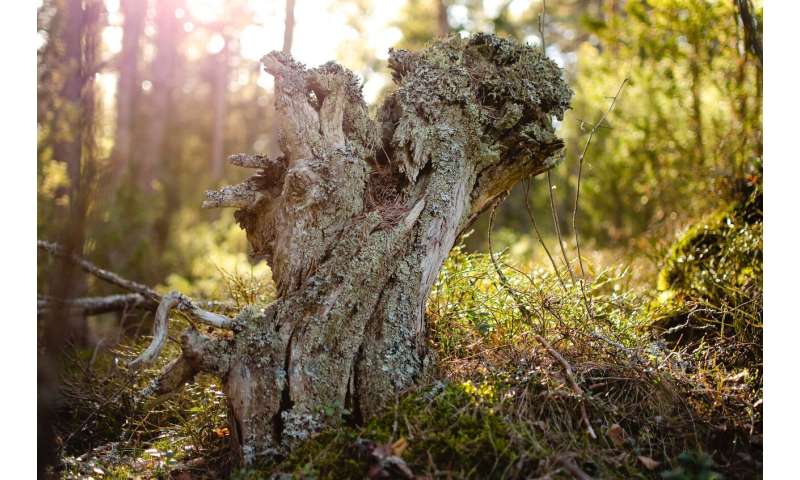Spotting Deadwood: Measuring forest biodiversity for the bioeconomy

Deadwood is a key indicator for measuring forest biodiversity. This will be one of the possible sub-indicators to be used in the BioMonitor data platform and model toolbox to measure biodiversity in connection to the developing European bioeconomy
Not everything is full of life in the forest, yet deadwood acts as an integral part of its ecosystem.
Deadwood refers to the non-living woody debris we see standing in the forest or lying around on the forest soil. All sorts of organisms and plants rely heavily on it as deadwood acts as a food source and provides shelter to them. With deadwood in the picture, it will tell us how much biodiversity there is in our forests. In that way, we can make sound and sustainable forest management decisions.
Deadwood situation in Europe
The amount of deadwood varies across European countries, but is generally substantially less compared to natural conditions, due to intensive forest management practices in the past. Given the present low levels of deadwood, it is currently considered that more deadwood is better, although in some areas the accumulation of deadwood may not be desirable, for example in connection to risks of wildfires and insect outbreaks.
Other than measuring the amount of deadwood is present in a forest, its various types and sizes or dimensions must be taken into consideration. These affect the range of biodiversity present in the forest ecosystem.
Keeping forests healthy for the bioeconomy
In the meantime, forests continue to have a substantial role in the European bioeconomy. Wood is an essential bio-based raw material, and bio-energy resource. The level of deadwood needs to be kept at bay for different life forms to thrive.
The European Commission has recently announced its EU Biodiversity Strategy for 2030. Moreover, the European Bioeconomy Alliance has published its position on stressing the bioeconomy's relevance to the EU Green Deal. These reflect the need for a holistic and evidence-based bioeconomy to prove such claims. Countries and regions can then develop better practices and strategies for their economy and the planet. Such a case can already be imagined among forests.
The BioMonitor project is addressing this challenge by building a robust data and modelling framework that will monitor and measure the bioeconomy's impact in society based on the UN's Sustainable Development Goals. The consortium released a policy brief last year and highlighted the primary indicators to be used; one of the indicators mentioned is focused on biodiversity.
As a next step, BioMonitor partners are identifying the sub-selection of these indicators: one of which is focused on deadwood. Once confirmed, models that target such indicators will then be added into the system. These will be used to show the different scenarios one can picture once various policies and actions are put into motion. Stakeholders, will then, be able to make informed decisions: enabling us to move towards a sustainable future thanks to the bioeconomy.
Reference:
Verkerk P.J., Lindner M., Zanchi, Zudin S., 2011. Assessing impacts of intensified biomass removal on deadwood in European forests. Ecological indicators, Volume 11, January 2011
EEA 2015 https://www.eea.europa.eu/ds_resolveuid/51d6408445a54f2dace0ef82265e346b [accessed 6.5.2020]
Provided by iCube Programme